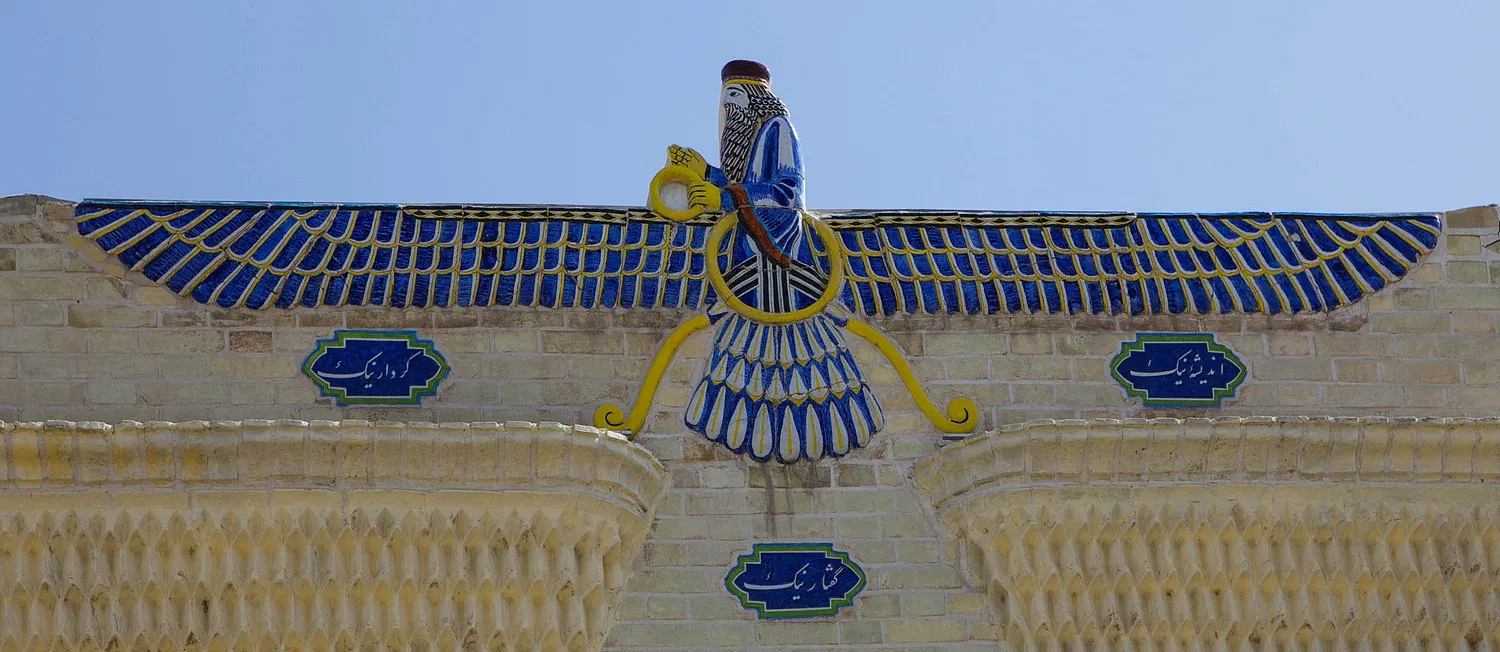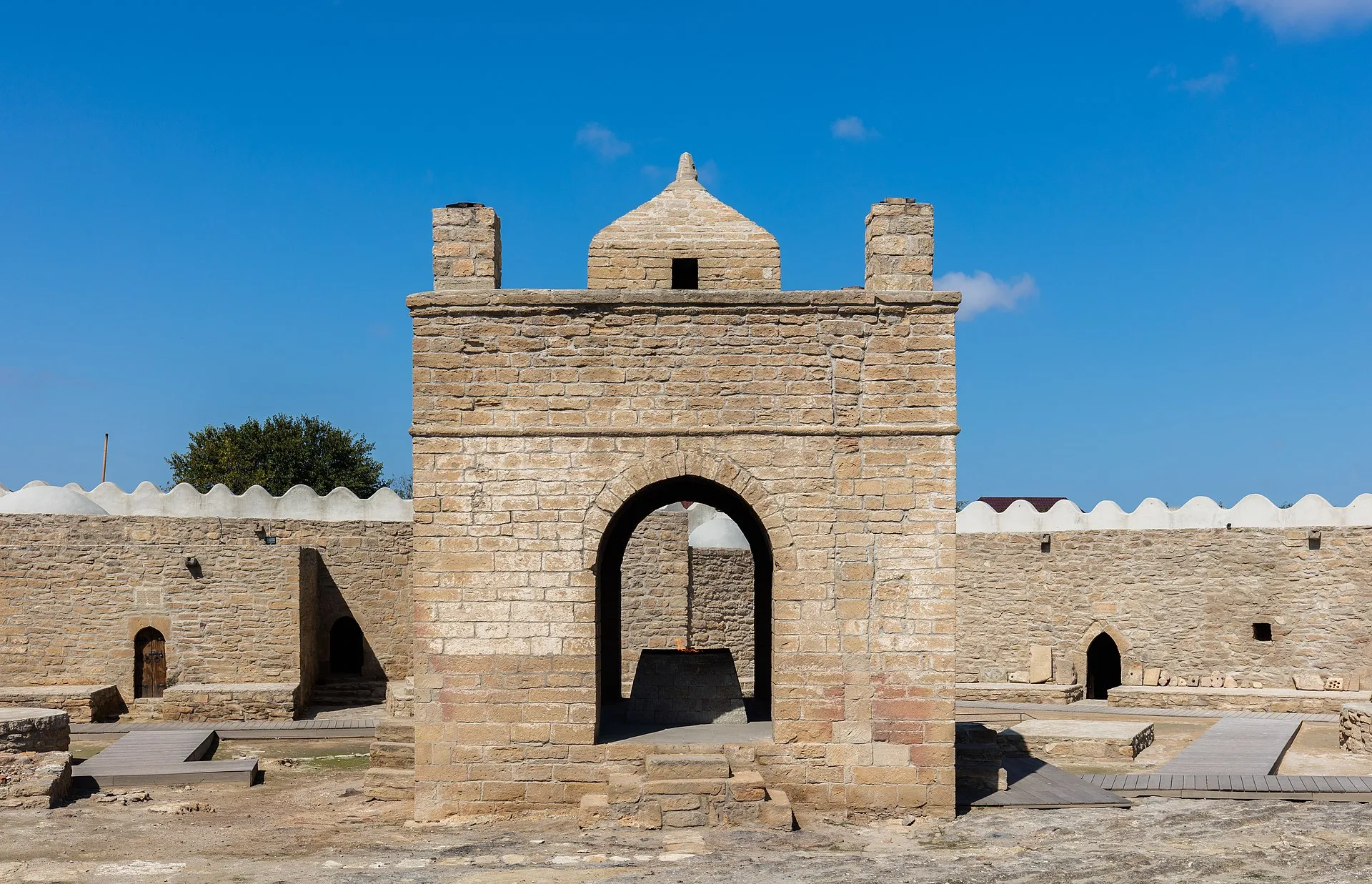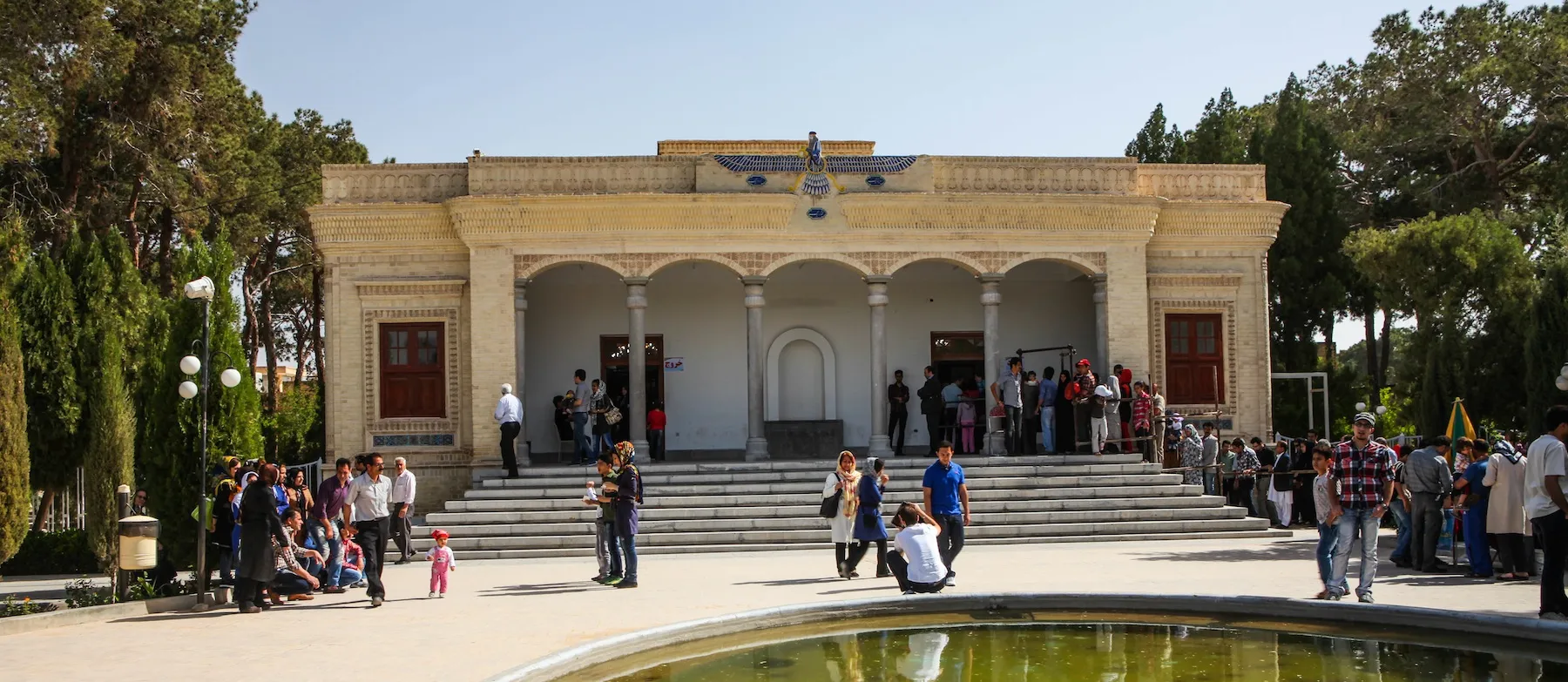What’s unique about Yazd and its religious attractions is its exceptional Zoroastrian pilgrimage sites such as the Fire Temple, Tower of Silence, and the Chak Chak village among which the Fire Temple is the most notable and honored one among Zoroastrians. This extraordinary structure with its flower carvings and the great Faravahar symbol standing high up the entrance to this place has housed a fire that is assumed to be burning since the fifth century. The building itself reflects through the clear surface of an oval pool among a beautiful garden and dates back to pre-Islamic Era. Here you’d get a chance to get to know more about the oldest monotheistic religion, Zoroastrianism.
The Atash Behram, meaning “Fire of Victory,” is the heart of Zoroastrianism, a religion that has been practiced in Iran since 400 BC. This sacred temple is one of the nine Atash Behrams worldwide and the only one in Iran with the highest-grade Zoroastrian fire. Let’s explore the wonders of Yazd Atash Bahram.
Iran’s Zoroastrians Keep Ancient, Sacred Flame Burning
At Yazd Atash Bahram, a large bronze goblet houses a fragrant holy fire that has burned for over 1,500 years. The Zoroastrian community, numbering around 200,000 people today, mainly resides in Iran and India. Their reverence for fire reflects a belief in its supreme purity, alongside water, air, and earth, which must remain untouched by human activities.

Early Religion: Zoroastrianism, Zorvanism
Zoroastrianism, dating back 3,500 years, was the predominant religion of the ancient Persian empire. This polytheistic belief system featured gods like Ahura Mazda, Mithra, Anahita, and others, opposing the forces of darkness led by Angra Mainyu. Choices made in supporting good or evil determined one’s destiny in life and after death.

Origin & Development
Fire, crucial in ancient Persian religion, symbolized purity and played a role in legal matters through the Ordeal by Fire. The hearth fire, central to daily life, inspired outdoor rituals, focusing on fire, air, earth, and water. The exact evolution of the fire temple remains unclear, as Zoroastrianism started as an oral tradition, transitioning to written texts during the Sassanian Period.
Form, History, & Ritual
The fire temple’s development from hearth fire to altar fire, and finally to buildings surrounding a central altar and eternal flame, is a fascinating journey. While early rituals are lost to time, later Zoroastrian works like the Bundahisn provide insights into the types of fires and rituals surrounding them.
Types of Fires & Legends
The fire temple hosts various types of fires, each representing different elements. Legends surrounding these fires add a mystical touch to the religious practices, connecting worshippers with ancient stories and traditions.
Destruction & Revival
Throughout history, fire temples faced challenges, including destruction. However, the Zoroastrian community exhibited resilience, contributing to the revival of these sacred places. The story of destruction and revival reflects the enduring spirit of Zoroastrianism.
Cultural Significance Today
In the present day, the Zoroastrian Fire Temple, Yazd Atash Bahram, stands as more than a relic of the past; it’s a living testament to the enduring cultural fabric of Yazd. Hosting festivals, cultural events, and community gatherings, the temple pulsates with the rhythms of contemporary life. It remains a beacon of cultural identity, where the ancient seamlessly intertwines with the modern, creating a dynamic and vibrant atmosphere that resonates with both locals and visitors alike.

Visitors Experience
A visit to Yazd Atash Bahram is not merely a historical exploration but a journey into a unique spiritual realm. Guided tours offer insights into the rich tapestry of Zoroastrianism, allowing visitors to witness the fragrant holy fire that has burned for over 1,500 years. The temple’s ambiance, infused with centuries of devotion, envelopes visitors, creating an immersive experience. Whether attending cultural performances or participating in interactive exhibits, each moment at the Zoroastrian Fire Temple becomes a stepping stone into the ancient heart of Yazd.
Zoroastrian Contributions
Beyond the temple walls, the influence of Zoroastrianism reverberates across the broader spectrum of human civilization. This ancient faith has contributed to philosophical discourse, ethical frameworks, and even the shaping of other religions. The echoes of Zoroastrian ideals can be discerned in the collective conscience of humanity, a subtle yet enduring legacy that extends far beyond the boundaries of the Yazd Atash Bahram.
Preservation Efforts
Efforts to preserve the Zoroastrian Fire Temple echo the commitment to safeguarding cultural heritage. The local community, joined by international organizations, actively engages in preserving the temple’s architectural integrity and cultural significance. These endeavors not only maintain a physical structure but also ensure that the spiritual essence of Yazd Atash Bahram continues to inspire generations to come.
Modern Challenges and Adaptations
In the face of modern challenges, the Zoroastrian community exhibits resilience and adaptability. Whether through interfaith dialogue, preservation of traditions, or the integration of technology in temple activities, the faith evolves without compromising its core principles. The Zoroastrian Fire Temple stands as a testament to a living, breathing faith that gracefully navigates the complexities of the modern world while staying anchored in the ancient wisdom that defines it.
In exploring the Zoroastrian Fire Temple of Yazd, we discover a rich tapestry of history, rituals, and beliefs that have stood the test of time. The flames at Yazd Atash Bahram continue to illuminate the path of this ancient faith, inviting visitors into a world where fire represents not only physical warmth but also spiritual purity.
